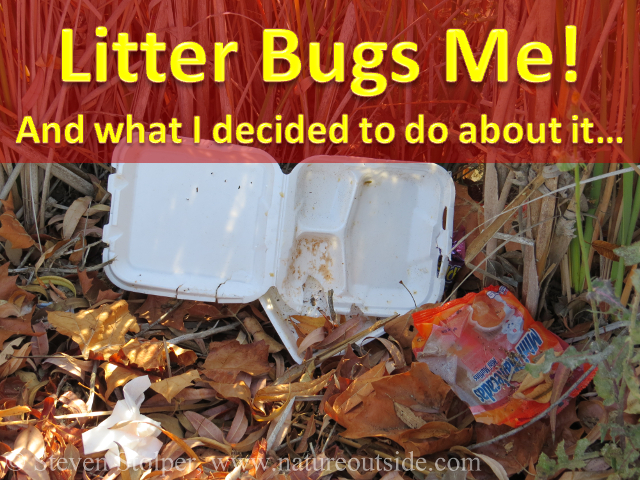
Have you ever done a good deed out of pure disgust?
Well now I have!
I work in the city of Milpitas, California. It lies east of the southern tip of San Francisco Bay. Milpitas is not as well known as its more glamorous Silicon Valley neighbors and you may not have heard of it. But many of my coworkers scoff at this city of 70,000. All they can talk about are the pungent odors from a nearby landfill that waft through our parking lot several days a week.
Yet I have a soft spot for this community. The residents I’ve met are all hard working, considerate people. If I need to do some shopping on my way home, I try to stop by a local store and throw some business Milpitas’ way.
But there is another reason I like the city. Hidden in the concrete, industrial jungle are some unexpected natural areas.
Nature Makes a Stand
San Francisco Bay was once a thriving estuary supporting thousands of plant and animal species. The Ohlone Peoples who lived here inhabited coastal wetlands teeming with life. Plants like Tule (Schoenoplectus acutus) and Cattail (Typha sp.) formed impenetrable jungles that stretched for miles. Tule in particular was used by Native peoples to make shelters, bedding, toys, clothing, and even boats!
But over the last century almost 90 percent of these wetlands have disappeared. And their loss has had a devastating impact on the fish and wildlife that were once so numerous. It doesn’t take a rocket surgeon to figure out who’s responsible for this decline.

Shorebirds like this Great Blue Heron stand like statues in the water waiting to strike their prey
That’s why I was pleasantly shocked to see pockets of marshland surviving in Milpitas. Several creeks are now flood control channels. And areas nearby remain seasonal wetlands.
One of them is a small wetland bordering a nearby parking lot. It is one of the vanishing places where wildlife still maintains a tenuous foothold. Many office workers in my area spend part of their lunch hour strolling along its edge to savor a taste of nature. If you stand on the shore, with your back to the warehouses, there is endless entertainment. Egrets and herons stalk silently along the waterline. Kingfishers and coopers hawks swoop from perches like trapeze artists. Amphibians croak as dragon flies perform daring acrobatics. And all this is set against the rhythmic swaying of the tule and cattail.
Litter-ally Crazy
But the grass along the shoreline is covered in disgusting litter. Discarded food containers, drink cans, paper cups, and detritus from nearby businesses. It’s repulsive.
But you get used to anything after a while. And I learned to tread carefully, stepping between half eaten takeout meals while keeping my eyes peeled for coopers hawks resting on the far bank.
One day I reached my limit. I was talking with several workers from nearby businesses when the topic of “the swamp” came up. They all expressed their contempt for the litter piled along the shoreline and poured derision on the people throwing it there.
It was that moment when I realized I had been walking through the trash for several months and had not done a thing to improve the situation. I cursed the trash but had not picked up a single discarded item – Not a single plastic spoon, soft drink can, or even a paper cup. I felt both embarrassed and emboldened.
I couldn’t stand it any longer. I had to do something.
Yes We (Trash) Can!
My plan was simple. I would visit the marshland on my day off, before September 19, and pick up all the trash I could find.
September 19 is special, it’s “Coastal Cleanup Day.” Each year local charities sponsor the event, which encourages residents to form groups to pick up trash along waterways ahead of the first rains. This year’s Coastal Cleanup Day was September 19.
There was some urgency to my mission. The San Francisco Bay Area has what’s called a Mediterranean climate. Mild, wet winters and hot, dry summers make it the perfect place to grow wine grapes. But it also means that the rains absent all summer begin in earnest in September. And when they do they wash a summer’s worth of accumulated trash into our creeks, wetlands, and San Francisco Bay.
Overmatched by Trash
A main tenet of bushcraft is being a good steward of the land. It felt good to put some action behind the words.
I’m not one to tilt at windmills, and picking up trash is hardly heroic. But every little bit helps, right?
I turned out early one Saturday morning to put my plan into action. The warm morning betrayed the sweltering day to come. I had a pair of nitrile gloves and three contractor-sized trash bags. I chose to start at the water line and work my way up the bank.
Here are some shots of the trash. But be aware that these are “beauty shots” of the shoreline. Behind me are moldy milk crates overflowing with rotting funk. I just couldn’t bring myself to pollute this article with nauseating pictures of the really disgusting trash.
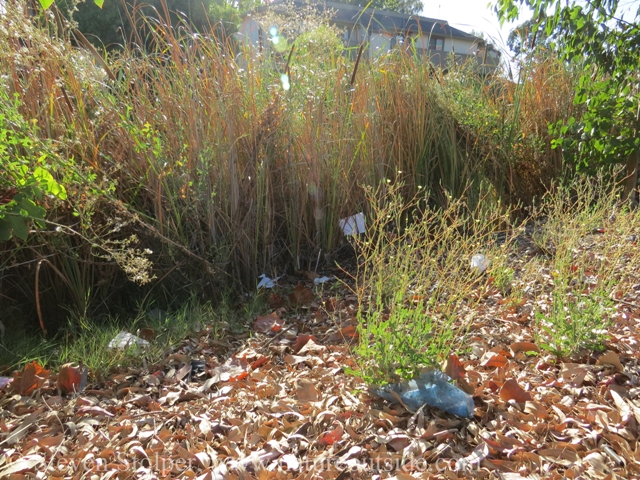
Trash blown from piles behind me lodge against the tule at the waterline.
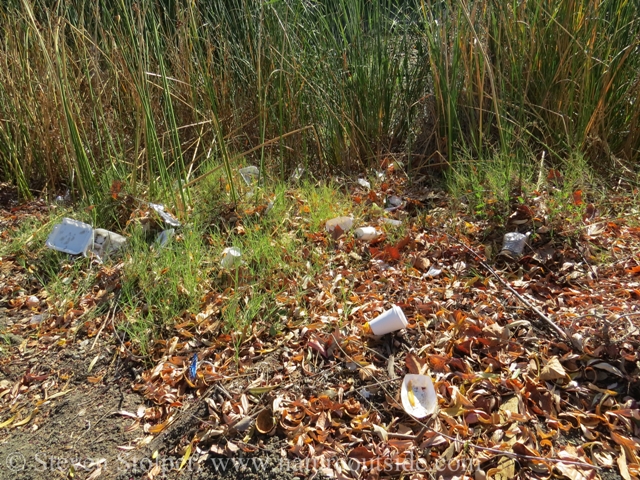
I didn’t have the heart to photograph the big piles of trash
It became apparent that my single-handed effort was not going to be enough. Even after my bags were full, there was still scattered trash as far as I could see. And come Monday there would be more.
I needed help.
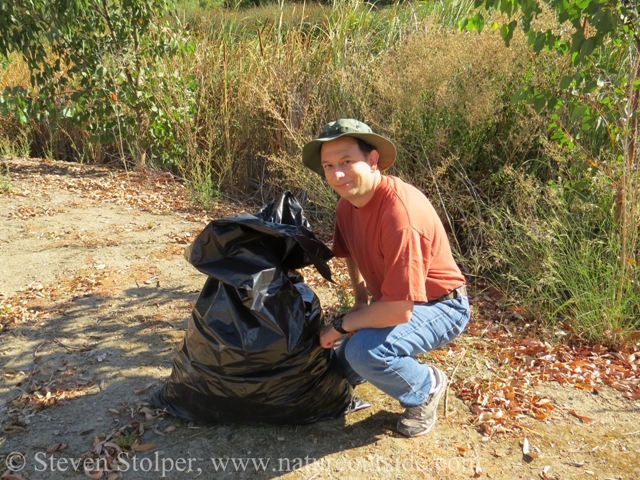
My measly bags of trash were not going to get the job done. And what happens Monday?…
The Good, The Bad, The Ugly!
There is something I should mention about the trash. I know exactly where it’s coming from.
You see, the trash is not clustered around the waterline. Instead, it starts further up the bank and is blown toward the water by the wind. There is a bench surrounded by a moat of half-eaten food and discarded containers. And the edge of the parking lot in front of three businesses is piled with plywood, discarded fasteners, beer cans, and packaging.
The litter comes from two sources: Employees from three nearby warehouses and the truck drivers who service them.
I realized my efforts weren’t going to be enough. So I contacted the surrounding businesses. I asked them if they knew about the trash problem, whether they had done anything to address it, and asked if they could provide a response for this article.
I expected them to say they were unaware of the problem and would clean up around their buildings. But here’s what actually happened…
Let’s start with the bad and the ugly
I contacted the property manager of the business park. The company’s name is PS Business Parks. It has been two weeks and they have not replied to my Emailed questions. Perhaps PS Business Dumps is a more appropriate name for the company?

The owner of the business park did not respond to my request for comment
I contacted Sears Logistics. Yes, that Sears. Their employees and the truck drivers delivering to their warehouse contribute to the trash. Sears Logistics did not answer my request for comment, either. Apparently logistics refers to moving trash into the communities surrounding their buildings.
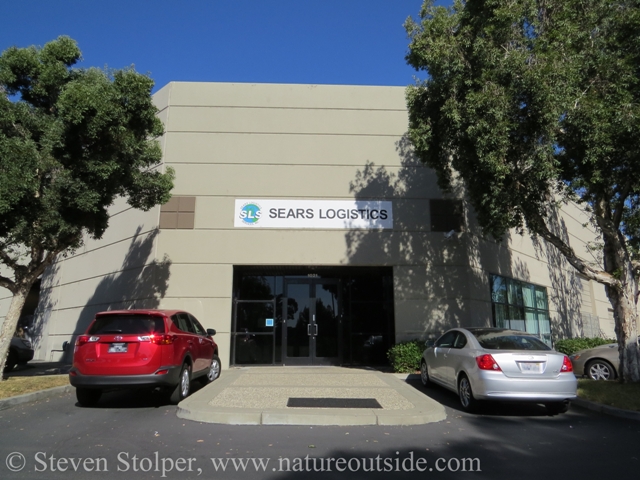
Sears did not answer my request for comment on the trash outside their building
I also contacted Contract Office Group. Most of their trash was packaging and fasteners, along with the usual food containers. Guess what? They didn’t answer my inquiry about the trash either. I found it ironic that their tagline is, “Creating sustainable workplaces.” They seem to show no interest in creating a sustainable workplace for themselves.

Contract Office Group also did not respond to my inquiry about the trash outside their building
Now, for some good news…
The last business I contacted was Tuff Shed. They build small shelters and outbuildings for equipment and vehicle storage. They sell to consumers so you may have seen their products.
I contacted them about the trash and… they responded! What a surprise! Their manager of business and workforce development let me know that he sent a message regarding the trash to the General Manager in the area.
That’s all well and good, but would it translate into action? I visited the area a few days later and there was a notable improvement! The bench area had been cleaned and much of the trash removed. The milk crates were gone and there was a new rubber garbage can in their place. Some of the larger trash items along the edge of the parking lot was also missing.
I was a little disappointed to see that only the trash within a 20 foot radius of the bench had been removed. There was still plenty of trash on the grass to either side. But someone made a well-intentioned effort to clean up the place. Good for Tuff Shed!!!
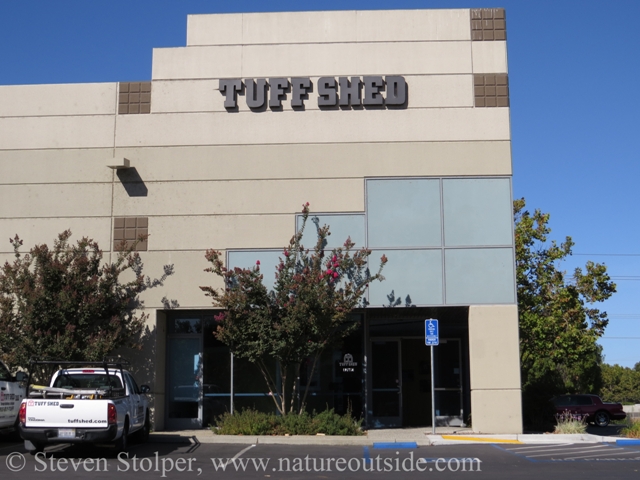
Tuff Shed responded and a few days later much of the trash was removed from the worst area near the water
It’s possible I’m showering undeserved credit on Tuff Shed. One of the other three businesses might have silently performed the cleanup. But Tuff Shed was the only one of the four businesses I contacted that responded to let me know they were looking into the problem. So it is likely they made the effort.
What Comes Next?
Plenty of trash remains, even with the removal of my three bags of trash and Tuff Shed’s cleanup. The grass remains littered with cups, bottle caps, and a variety of small refuse.
I wanted to give each business a chance to acknowledge the problem and do something to address it. Only one responded.
All it would take to clean up the area is an honest afternoon’s work, a few signs, and a modest effort to keep employees from littering.
Update: As I write this article, the local water district is bulldozing several nearby creeks that are used for flood control. Their goal is to increase the capacity of the channels in case of heavy winter rains. They are doing it by removing all the plants and natural habitat that has sprung up over the years in the creek beds and along the banks. Miles of riparian habitat is being obliterated by backhoes and earth movers. This makes the little seasonal marshland even more important to local wildlife and to people who enjoy strolling in nature. It is now a lonely oasis of green in a monochromatic concrete wasteland.
So what should I do next? Should I contact the city of Milpitas? Should I alert my friends in the mainstream media who might be interested in the human-interest story? I have several contacts with local environmental organizations. Should I ask them for help? Or, should I just let it go…
I would welcome your suggestions in the comments below…
More Articles on NatureOutside
Walking in Nature Changes Your Brain
Give of your skills, even if you don’t think you have any!
For fun facts and useful tips, join the free Bushcraft Newsletter.

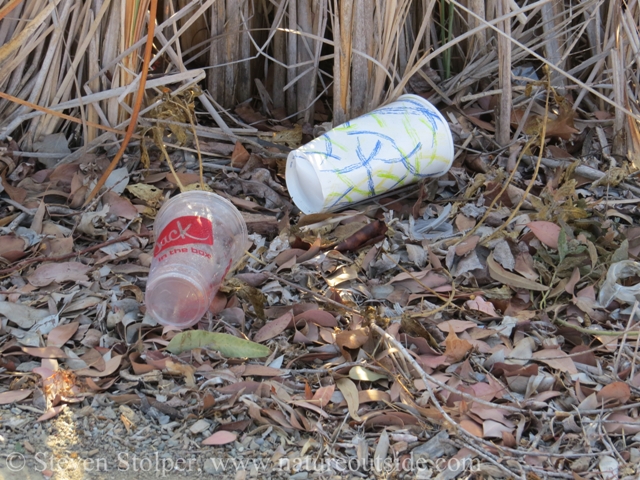
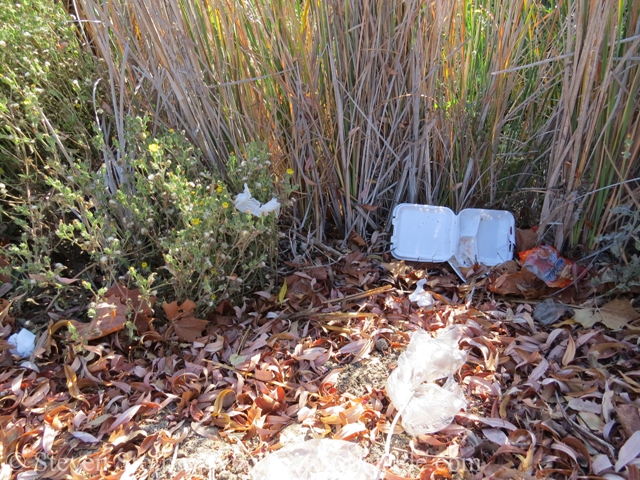
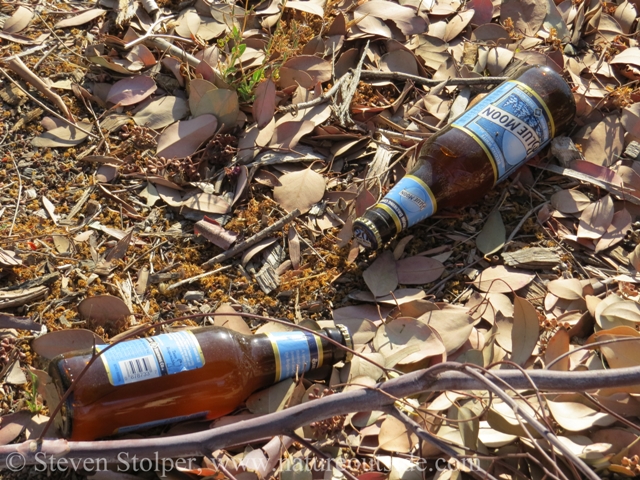
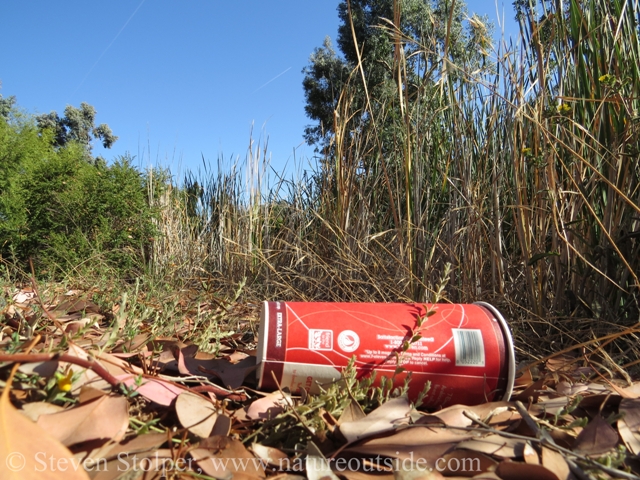


Steve: this is a very well written post. Years past when I worked in Milpitas, I also admired the hard-working spunk of the residents and the little remaining corners of creeks and marsh. Trash creates more trash but maybe it is reversible. I think getting one company to put a trashcan out there is a huge start. Maybe talking to other people when you are out for walks may help too and if you find someone that works for one of those companies, they could become another voice of reason and encouragement. I think you should definitely talk to the City of Milpitas. Some cities and the Santa Clara Valley Water District have small grant programs to support such clean-up efforts in the watershed. Put a sign on the trashcan inviting people to join you for one-half hour on a certain evening every week to pick up trash?
Cindy, these are great ideas! I will approach the the City of Milpitas and see if they can do anything to help. I’ll also check into programs the water district might sponsor. Discussing the situation with some of the other local workers, possibly those working at the three businesses, also seems like a good thing to do. Thank you for these suggestions.
You should petition your city clerk for a reduction in property taxes, because the value of the city is in decline.
You might as well let Ducks Unlimited, and any other land conservancy group you can find, about this situation as well. They all have strong lobby groups that can put “heat” on politicians to “do the right thing”.
Also, get involved in the next election to vote out bad politicians and vote in good ones.
Mark, that’s a great idea about Ducks Unlimited and other land conservancy groups. The Sierra Club chapter in my area maintains a phone number dedicated for situations where habitat is threatened. As for the reduction in property taxes… I’m not holding my breath!